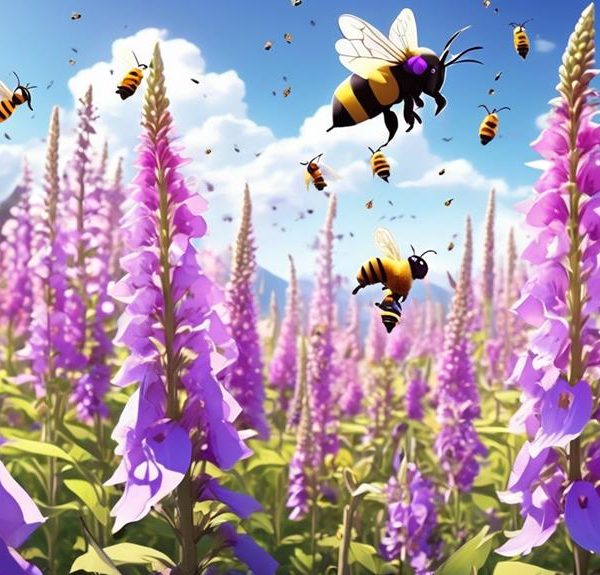Wondering if bees fancy impatiens? Dive into a Victorian beekeeper's exploration of bees' floral preferences, filled with surprising revelations.
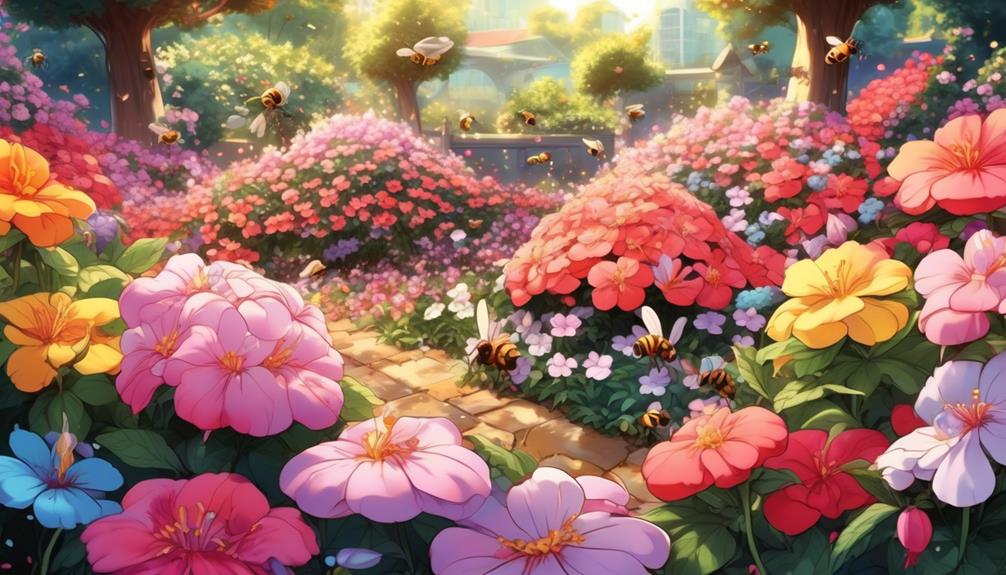
Do Bees Like Impatiens?
Imagine you're a beekeeper in the Victorian era, surrounded by the hustle and bustle of bees buzzing around. Ever wondered what plants they're most attracted to? You've probably noticed them hovering around your garden's impatiens, but do they really like these flowers, or is it just a case of mistaken identity?
As you explore this mysterious relationship, you'll discover fascinating insights into the world of bees and their floral preferences. Just when you think you've got it all figured out, a surprising twist may make you question what you thought you knew about these industrious insects.
Key Takeaways
- Impatiens are highly appealing to bees due to their bright colors and high nectar production.
- Bees and Impatiens have a mutualistic relationship where bees collect nectar and inadvertently aid in cross-pollination.
- Observing bee behavior and preferences towards Impatiens can provide insights into their plant preferences.
- To enhance your garden for bees, plant a variety of flowers, provide a water source, avoid harmful chemicals, and create sheltered areas.
Understanding Bees' Plant Preferences
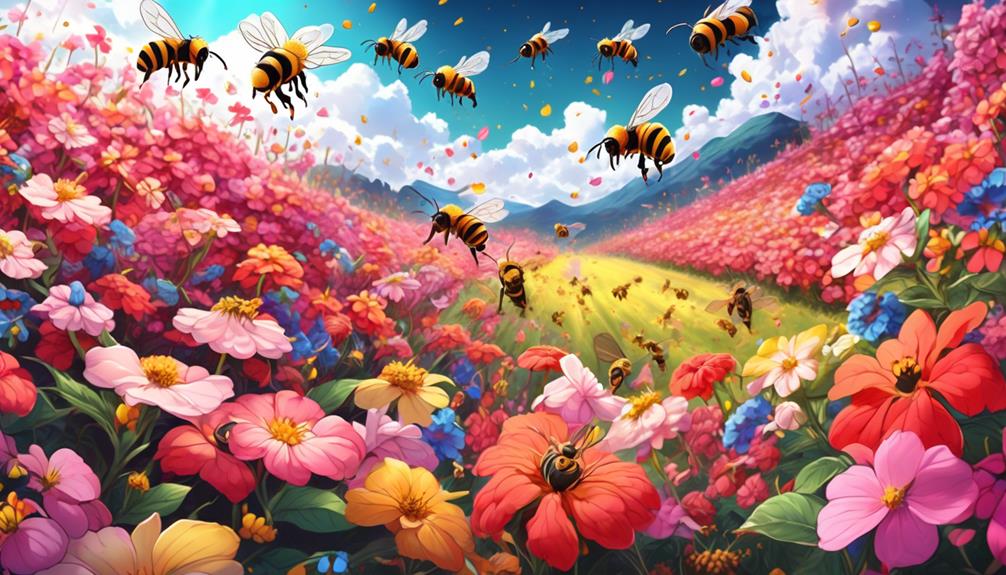
To truly comprehend bees' plant preferences, it's essential to delve into their intricate relationship with various flora, such as the Impatiens. These plants, often known as busy lizzies or balsams, have been observed to attract a variety of bee species. However, understanding why bees prefer certain plants over others isn't as simple as you might think.
Firstly, you must grasp the significance of a plant's nectar. It's the main energy source for bees, and its sugar concentration determines its attractiveness. Impatiens, with their sweet, sugary nectar, are a reliable source of food.
Secondly, color matters. Bees can see ultraviolet light, which humans can't. This allows them to detect patterns on flowers invisible to us, leading them to rich nectar sources. Impatiens' bright, colorful petals are a beacon to bees.
Lastly, consider the shape and size of the flower. Bees prefer flowers that provide a landing platform, like the flat-faced Impatiens.
Impatiens: An Overview
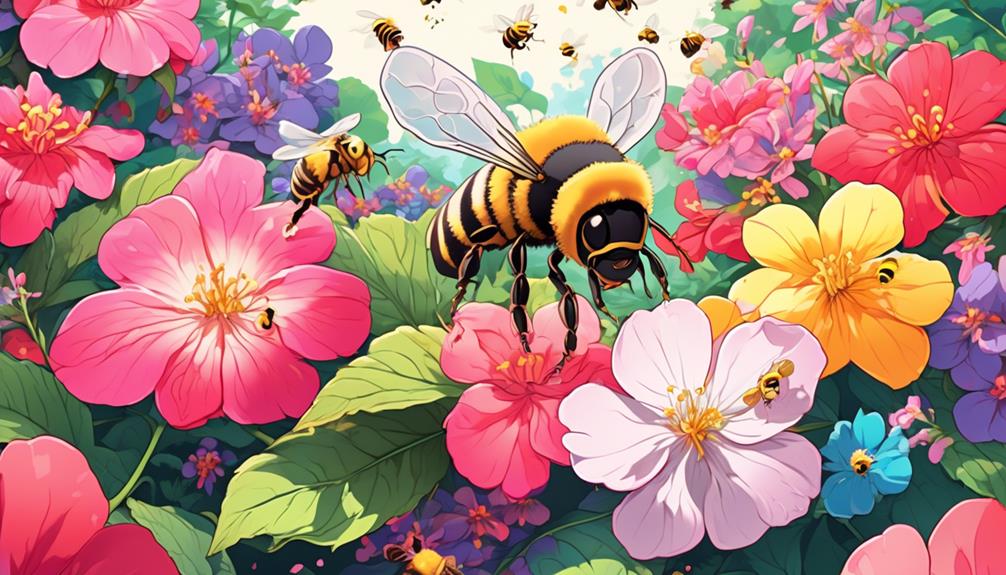
Having explored why bees are drawn to Impatiens, let's now take a closer look at these fascinating plants themselves. Native to eastern and southern Africa, Impatiens, commonly known as Busy Lizzies, are a vibrant addition to any garden. They're popular due to their bright, showy flowers and ability to thrive in shade.
Impatiens have a unique trait: their seed pods explode when touched, hence the nickname "touch-me-not." But it's not just their exciting characteristics that make them captivating. These plants have a secret language that speaks volumes to bees.
Impatiens Aspects | Attraction for Bees |
|---|---|
Colorful Flowers | Bees are attracted to bright colors, making Impatiens a favorite. |
Nectar Rich | Impatiens produce lots of nectar, providing a food source for bees. |
Bloom Duration | These plants bloom for a long period, offering bees a constant food supply. |
Understanding Impatiens and their appeal to bees is about more than just gardening. It's about biodiversity, supporting pollinators, and maintaining a balanced ecosystem. So, when you choose to plant Impatiens, you're not only creating a beautiful garden, but you're also contributing to a healthier planet.
The Attraction Between Bees and Flowers

In nature's grand design, bees and flowers share an intricate and mutually beneficial relationship. As a bee lands on a flower's bloom, it's looking for nectar and pollen, the main sources of its diet. While it's busy with this task, it inadvertently brushes against the flower's reproductive parts, picking up pollen on its body.
This pollen sticks to the bee's hairy body and, in turn, gets transferred to the next flower it visits. It's an ingenious process known as cross-pollination. This symbiotic relationship ensures the survival of both species. The bees get food, and the flowers get a helping hand in reproduction.
But why do bees prefer some flowers over others? It's all about the attractiveness of the flower. Bright colors, sweet fragrances, and nectar-rich flowers are more likely to attract bees. It's a form of advertising, with flowers competing for the attention of pollinators. The more vibrant and fragrant the flower, the more likely it's to attract bees.
Bees' Interaction With Impatiens

You'll often spot bees buzzing around a garden full of Impatiens, a popular bedding plant known for its vibrant blooms and nectar-rich flowers. Their dynamic interaction is a sight to behold, an intricate dance of survival and sustenance.
Bees, particularly honeybees and bumblebees, are drawn to Impatiens due to their bright colors and the sweet nectar they produce. This nectar serves as a primary food source for the bees, fueling their flight and honey production. As they forage, bees inadvertently collect pollen on their bodies, which they'll later groom into their pollen baskets to bring back to the hive.
The bees' visit to the Impatiens isn't one-sided. As bees move from flower to flower, they facilitate cross-pollination. Pollen from the stamens of one flower sticks to the bee, and when the bee visits another flower, some of this pollen rubs off onto the pistil, the female reproductive organ of the flower. This fertilization allows the Impatiens to produce seeds, ensuring the next generation of plants.
Thus, the relationship between bees and Impatiens is mutualistic, with both parties benefiting from their interactions. From nectar and pollen collection to pollination and seed production, it's a cycle that's integral to the ecosystem.
Observing Bees in Your Garden

Whether you're an avid gardener or simply a nature enthusiast, it's fascinating to watch bees as they work among the Impatiens in your garden, their industrious buzzing a testament to the critical role they play in our ecosystem. Observing these diligent pollinators can provide valuable insights into bee behavior and plant preferences.
To start, you'll need to identify the bees in your garden. Honeybees are easily recognizable by their striped abdomen, while bumblebees are larger, fuzzier, and often black and yellow. Solitary bees, though less common, are also important pollinators and can be identified by their size and lack of stripes.
Next, watch how the bees interact with your Impatiens. Do they seem to prefer certain colors or shapes? Are they spending more time on these flowers than others in your garden? Note any patterns in their behavior, as this could indicate a preference for Impatiens.
Enhancing Your Garden for Bees
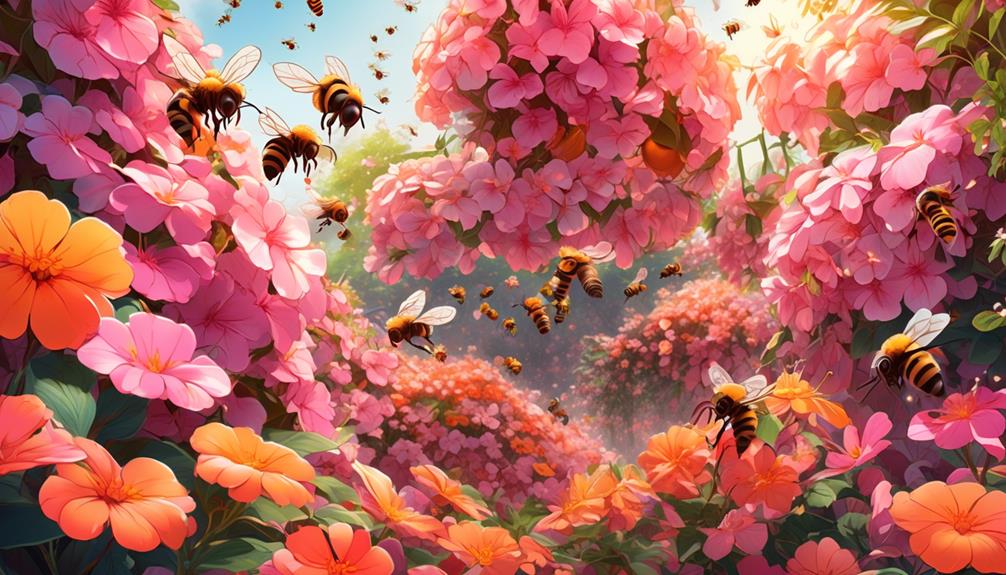
To make your garden a bee haven, it's important to plant a variety of flowers that bloom throughout the year – this ensures a continuous food source for these industrious pollinators. Bees are especially drawn to blooms with a high nectar or pollen count, such as asters, sunflowers, and, of course, impatiens.
In addition to a diverse array of plants, consider adding a bee bath. This is a shallow water source where bees can hydrate and cool off. Fill a shallow dish with water and add small pebbles or twigs for the bees to land on.
Further, avoid using pesticides or other harmful chemicals in your garden, as these can be lethal to bees. Instead, embrace organic gardening methods to keep your plants healthy and vibrant.
Lastly, provide shelter for bees by leaving some areas of your garden untidy. Piles of leaves, logs, and even undisturbed soil can provide essential nesting sites for various species of bees.
Frequently Asked Questions
What Other Insects Are Attracted to Impatiens Besides Bees?
Beyond bees, you'll find many other insects attracted to impatiens. Butterflies, for instance, are drawn to their nectar-rich flowers. Moths, too, enjoy their sweet offerings.
Additionally, impatiens can attract certain types of beetles that feed on their leaves. It's not uncommon to see aphids and whiteflies hovering around these plants as well.
What Other Flowers Are Known to Attract Bees as Much as Impatiens Do?
You're curious about what other flowers attract bees as much as impatiens. Well, bees are particularly attracted to flowers like lavender, sunflowers, and coneflowers. They're drawn to their bright colors and fragrant scents.
Blue and yellow flowers are especially appealing. Bees also like plants that bloom for a long time, like salvia and sedum.
How Can One Safely Remove Bees From Their Garden if They Are Allergic?
If you're allergic to bees, removing them from your garden safely should be your priority. You shouldn't attempt this yourself. Reach out to a professional beekeeper or pest control service. They'll use protective suits and specialized tools to relocate the bees without killing them.
Meanwhile, avoid wearing bright colors, floral prints, or strong scents, as these can attract bees. Also, keep food and drinks covered when outside.
What Specific Species of Bees Are Most Attracted to Impatiens?
You're curious about which bee species are most attracted to impatiens.
Honeybees and bumblebees are particularly fond of them. Impatiens provide ample nectar, making them a popular choice for these bees. They're also attracted to the bright colors of impatiens.
Can Bees' Attraction to Impatiens Impact the Growth or Health of the Plant?
Yes, a bee's attraction to impatiens can impact the plant's health and growth. You see, when bees visit the flowers for nectar, they inadvertently pollinate the plants. This pollination is vital for the plant's ability to reproduce and grow. Without it, the impatiens' health could decline.
Conclusion
In conclusion, it's clear that bees do have an affinity for impatiens. These vibrant flowers offer a rich source of nectar, attracting bees and fostering pollination.
Observing bees in your garden can offer fascinating insights into their behavior and preferences.
So, if you're looking to make your garden more bee-friendly, consider planting some impatiens. They're not only beautiful, but they're also a wonderful way to support our precious pollinators.

